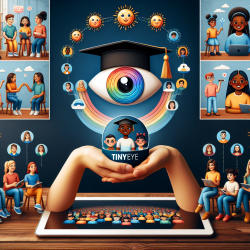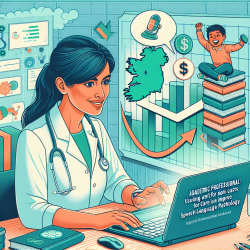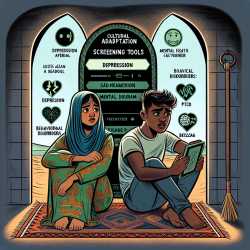Introduction: The Power of Multidisciplinary Education
In the rapidly evolving landscape of healthcare, the need for a multidisciplinary approach has never been more critical. As practitioners, especially those working with children, we must embrace the integration of various disciplines to enhance our skills and improve outcomes. The research article "Breaking down silos: engaging students to help fix the US health care system" highlights the importance of multidisciplinary education and collaboration among healthcare professionals. This blog will explore how these insights can be applied to the field of speech-language pathology, particularly in the context of online therapy services like those offered by TinyEYE.
Understanding the Research
The research conducted by Kumarasamy and Sanfilippo (2015) emphasizes the need for healthcare professionals to work collaboratively across disciplines. The study organized a student-driven symposium that brought together students from various fields to address the complexities of the US healthcare system. The outcomes revealed a significant interest among students to learn from each other and leverage their unique skills to solve healthcare challenges.
For practitioners in speech-language pathology, this research underscores the importance of understanding the roles and contributions of other healthcare professionals. By doing so, we can create a more holistic approach to therapy that considers the diverse needs of children and their families.
Implementing Multidisciplinary Practices
Here are some actionable steps practitioners can take to incorporate multidisciplinary education into their practice:
- Engage in Cross-Disciplinary Learning: Attend workshops, webinars, and conferences that focus on multidisciplinary approaches. This will help you gain insights into how other disciplines can complement your work in speech-language pathology.
- Collaborate with Other Professionals: Establish partnerships with professionals in related fields such as occupational therapy, psychology, and special education. Collaborative efforts can lead to more comprehensive care plans for children.
- Participate in Multidisciplinary Teams: Join or form teams that include diverse professionals. This can enhance your understanding of different perspectives and improve the quality of care provided to children.
- Incorporate Family and Patient Perspectives: Engage families in the therapy process and consider their input when developing treatment plans. This aligns with the patient-centered approach emphasized in the research.
Encouraging Further Research
The findings from the symposium highlight the potential for multidisciplinary education to transform healthcare practices. As practitioners, it is essential to stay informed about the latest research and trends in the field. Consider conducting your own research or collaborating with academic institutions to explore the impact of multidisciplinary approaches on child outcomes in speech-language pathology.
Conclusion: A Call to Action
The journey towards effective multidisciplinary collaboration in healthcare begins with education and a willingness to embrace new perspectives. By integrating multidisciplinary practices into speech-language pathology, we can create better outcomes for children and their families. Let us take inspiration from the research and strive to be proactive in our pursuit of knowledge and collaboration.
To read the original research paper, please follow this link: Breaking down silos: engaging students to help fix the US health care system.










